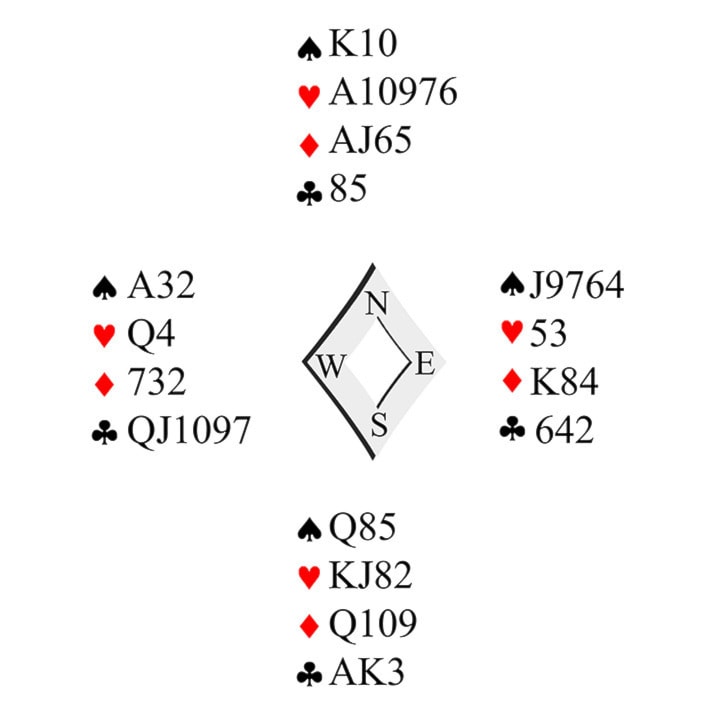Last week’s column introduced a wide range of terms including distribution, honours, danger hand and finesse to the newcomer. Who knew bridge had danger?
Let’s continue with another example of a Whist deal and count the points. North has 12 points, East has 4, South has 15 and West has 9. South becomes the declarer having the most points.
As we saw last week, if North and South have a combined suit of eight cards or more, they have what is called a golden fit and declarer will name that suit the trump suit. North tells the table that his distribution is 2-5-4-2 showing his length in spades, hearts, diamonds and clubs (reverse alphabetical order) respectively. This time they have a golden fit in hearts with a combined nine cards.
It is a fact that if North and South have a nine-card fit then East and West are guaranteed an eight-card fit in one of the other suits. Here they have two. You may get a deck of cards and move the cards around to convince yourself of this fact.
Distribution declarer can see (in his hand and in dummy) often has implications for the distribution of hands he cannot see, namely the opponents’ hands. The importance of this fact becomes very apparent when competitive bidding is involved. Bidding will be introduced next week.
North and South have the security of a trump suit so that East and West cannot run their own suit when they kick out the ace and king of clubs. Because there is a trump suit, each trick is won by the highest card of the suit led unless there is trump. When there is one or more trump present in a trick, it is the highest trump that wins the trick. One can play a trump if either a trump is led or one does not have any cards of the suit that was led.
The Lead: West leads the queen of clubs, a natural lead. Last week, in a notrump contract, South ducked. Here because of trump there is no reason to duck. Declarer wins the ace of clubs.
The Play: Eight Ever Nine Never
When only the queen is missing, in an eight-card fit, declarer will always (ever) finesse for the queen. With a nine-card fit, declarer will never finesse for the queen and will play for the drop, cashing the ace and king. As with most rules, even the alliterative (the e’s and n’s in eight ever and nine never) ones, there can be exceptions. These appear in other columns.
Declarer draws two rounds of trump, ruffs a club and then plays a small spade towards the king. It holds but the ace wins the queen when declarer leads back to his hand. Honours that are not touching in the same hand must be led up to from the other hand. That is the beauty of touching honours. They do not need transportation to be played. Transportation means getting to the other hand and leading up to the honour. Touching honours can just be played most of the time.
West returns a spade after winning the ace which declarer ruffs. He then uses a trump to get back into his hand to play the diamond finesse. He leads the Queen of diamonds towards dummy and lets it ride if it is not covered. It loses to the King. Declarer can now claim. Claiming is an important part of the game even if one does not play duplicate. It allows one to get the most amount of bridge played in a given time frame.
Declarer wins eleven tricks. We subtract book which is defined to be the number six from the number of tricks won and we get five. Declarer has just made five hearts.
Note: All the bridge columns may be viewed at http://watsongallery.ca.
